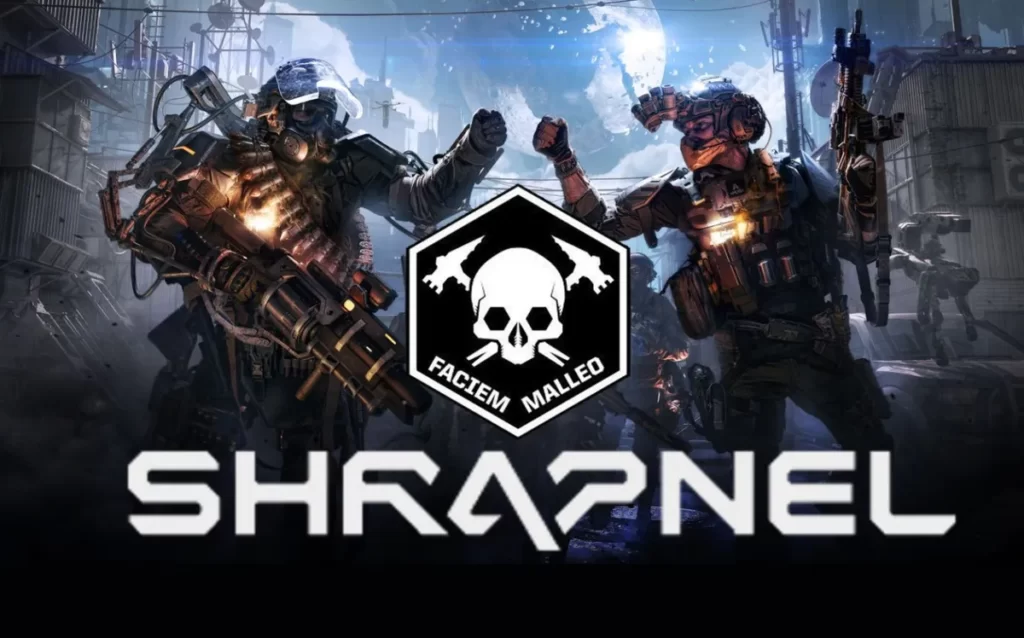Shine Bright
Shrapnel, a highly-anticipated first-person shooter (FPS) game developed by Neon, is set to launch soon on Web3. The game was showcased during the Game Developers Conference (GDC) in San Francisco, where developers from Neon presented its extraction-based gameplay to attendees. As described by the game’s creative director Clint Bundrick, Shrapnel is a game for hardcore PC players that features realistic and highly cinematic graphics, set in the year 2044 on a future Earth where meteors frequently crash.

The game’s environment features ambient neon lighting and pervasive steam, making it look like a dystopian sci-fi movie. The game is built using the high-end Unreal Engine 5, used by many major game studios, which makes the game feel visually appealing and futuristic.
The Gameplay
Shrapnel’s gameplay revolves around players looting and extracting meteor resources while engaging in PvP (player vs player) combat. The game’s audio also plays an important role in the gameplay, with high-pitched sirens and rumbling bass adding to the immersive experience.
As players make their way through the industrial rooms, they can choose to play aggressively or emphasize stealth, with strategy being an important element in character loadouts and playstyles. The game also features a health system where bodily injuries are displayed on-screen, with a handy icon next to the stamina bar that slowly regenerates over time. Players can pick up medkits during the game, but the lack of an on-screen time meter for healing in the midst of battle gives Shrapnel a more realistic but stressful vibe.

During the playtest, players were tasked with making their way around the Abandoned Calloway Compound map to extract meteor resources while taking out anyone they encountered. As players fight against each other, it can be challenging to determine the direction of incoming shots, as there is no directional indicator. In addition, movement in Shrapnel is slower, and the time-to-kill is much longer than in games like Apex Legends.
Intricate and Expansive economy
Shrapnel’s Head of Blockchain, Marc Mercuri, revealed that the game will have an intricate and expansive NFT economy built on the Avalanche blockchain. Every part of every gun and item that a player can wear will be an NFT, and players will be able to create their own content and use it in the game while retaining the rights to the IP they create.
Shrapnel is also offering multiple different types of matchmaking lobbies for players. For those who want to play without NFTs, it will be an option. However, for those with NFTs, each game will be high-stakes, with the possibility of losing NFTs upon death.

Overall, Shrapnel appears to be a game that is well-positioned to compete with the biggest traditional shooters in the video game market. The satisfying, cinematic playtest convinced many that Shrapnel’s experienced team is leading the charge in innovating Web3 game development. However, the question remains, what are the possible consequences of this game, particularly with the incorporation of NFTs?
The use of NFTs in games is a relatively new concept, and the implementation of an intricate and expansive NFT economy in Shrapnel is a significant development in the industry. NFTs allow for unique, verifiable ownership of digital assets, giving players an opportunity to own the items they acquire in the game and potentially profit from them.

On the other hand, there are concerns that NFTs could contribute to an increasingly elitist and exclusive gaming culture. The use of NFTs could potentially create a divide between those who can afford to acquire them and those who cannot, leading to a form of pay-to-win gaming culture. In addition, the implementation of high-stakes games where players can lose their NFTs.
Furthermore, the use of NFTs in gaming has also raised concerns about the environmental impact of blockchain technology. The process of creating and trading NFTs requires a significant amount of energy, and this has led to criticisms about the carbon footprint of NFTs. The concern is that the growing demand for NFTs in gaming could lead to a surge in energy consumption, which could have a negative impact on the environment.
Despite these concerns, the use of NFTs in gaming is growing rapidly, and many developers see them as an opportunity to create new revenue streams and provide more value to gamers. In the case of Shrapnel, the game’s head of blockchain, Marc Mercuri, has stated that the studio is taking a thoughtful approach to the implementation of NFTs in the game, and is focused on ensuring that the use of NFTs does not create a pay-to-win culture.
Overall, the development of Shrapnel and the use of NFTs in gaming represent an important trend in the gaming industry. As blockchain technology continues to evolve, it is likely that we will see more games that incorporate NFTs and other Web3 technologies. While there are valid concerns about the impact of NFTs on gaming culture and the environment, the potential benefits of NFTs in gaming cannot be ignored. As the gaming industry continues to evolve, it will be important for developers and gamers alike to consider the impact of NFTs and other Web3 technologies on the future of gaming.

Thanks for reading Solanews , remember to follow our social media channels for more!

